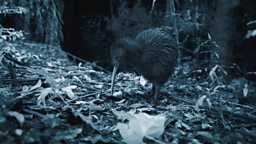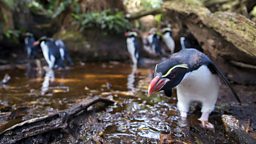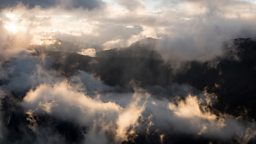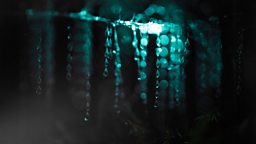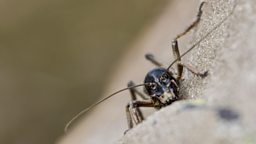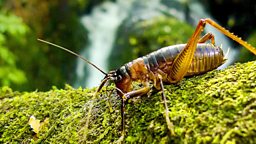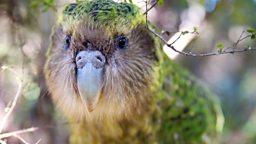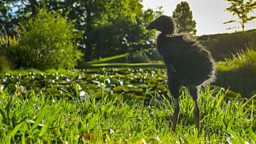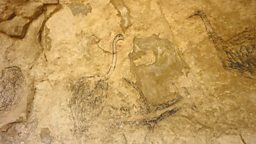Filming tiny time travellers
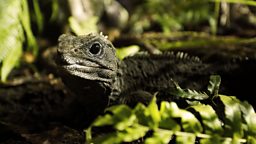
Until people found it and brought furry animals with them, New Zealand never had any large land mammals; it never had cats, foxes or rats, deer, rabbits, cows or sheep! Instead primeval New Zealand was a kingdom of birds, ancient plants, giant insects and rather odd reptiles, many of which date back to the time of the dinosaurs. In the absence of ferocious predators even familiar species do the strangest things; penguins breed in the woods, parrots play in the snow, crickets dive, and one of the country’s top predators is a slow moving, cold-tolerant dinosaur-like reptile which can live for a century, the tuatara.
primeval New Zealand was a kingdom of birds, ancient plants, giant insects and rather odd reptiles
The challenge for many of these species is that their home has been totally transformed over the past few centuries by people, and the animals and plants they brought with them. Species which evolved in isolation often struggle to cope with fast-breeding and often aggressive introduced animals. It is a story which is true around the world, but is especially so in New Zealand.
Sadly much of its original wildlife today is rare and survives on offshore islands, or in very carefully controlled reserves and in captive breeding programmes. The incredible work of New Zealand’s Department of Conservation has brought many species back from the brink of extinction whilst working to protect the remaining wild locations. Known as DOC, the department was a great partner and supporter of our series.
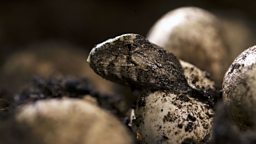
Tuataras are often called “living fossils”; they are the only survivors of a whole group of reptiles which thrived during the age of the dinosaurs. They became extinct everywhere else around 60 million years ago but the tuatara survived in New Zealand.
When we got the call, our team dropped everything and made it in time for the final eggs of the last clutch!
Slow breeding, long living and vulnerable to the introduced predatory mammals of contemporary New Zealand, tuataras are now restricted to some offshore islands and captive populations.
Perhaps because their kind has been around for hundreds of millions of years, tuataras are infamous for taking their time to do everything. They might only take one breath an hour and not eat for months, and they are woefully slow. But they are a key part of New Zealand’s story, so the question was how to bring to life their time travelling prowess and capture their character.
The only way to film them was to work closely with organisations working to preserve New Zealand’s unique wildlife. The town of Invercargill is close to New Zealand’s south coast; it’s home to The Southland Museum and Art Gallery, and a tuatarium complete with a breeding group of tuatara. The museum gave us access to three clutches of eggs ready to hatch during our filming period. Tuatara eggs can take between 11 to 16 months to hatch, so trying to predict the moment when the babies appear is very tricky. It’s about being in the right place at the right time.
When we got the call, our team dropped everything and made it in time for the final eggs of the last clutch! They captured incredibly intimate details of the tiny infant reptiles as they hatched, including the egg tooth they use to slit the leathery shell of their egg.
Auckland Zoo was home to more prehistoric time travellers. Weta are cricket-like insects, which have lived in New Zealand for more than a hundred million years, and bizarre velvet worms armed with digestive saliva and the ability to spit goo at enemies and prey. Velvet worms are some of the most ancient walking animals on earth; fossils of similar animals have been dated at more than 500 million years old!
Working closely with the team at Auckland Zoo under carefully controlled conditions, we were able to bring to life a hunting foray of a young tuatara, and images of New Zealand’s poisonous, prehistoric and often fanged mini predators, without any creatures or crew being hurt.


